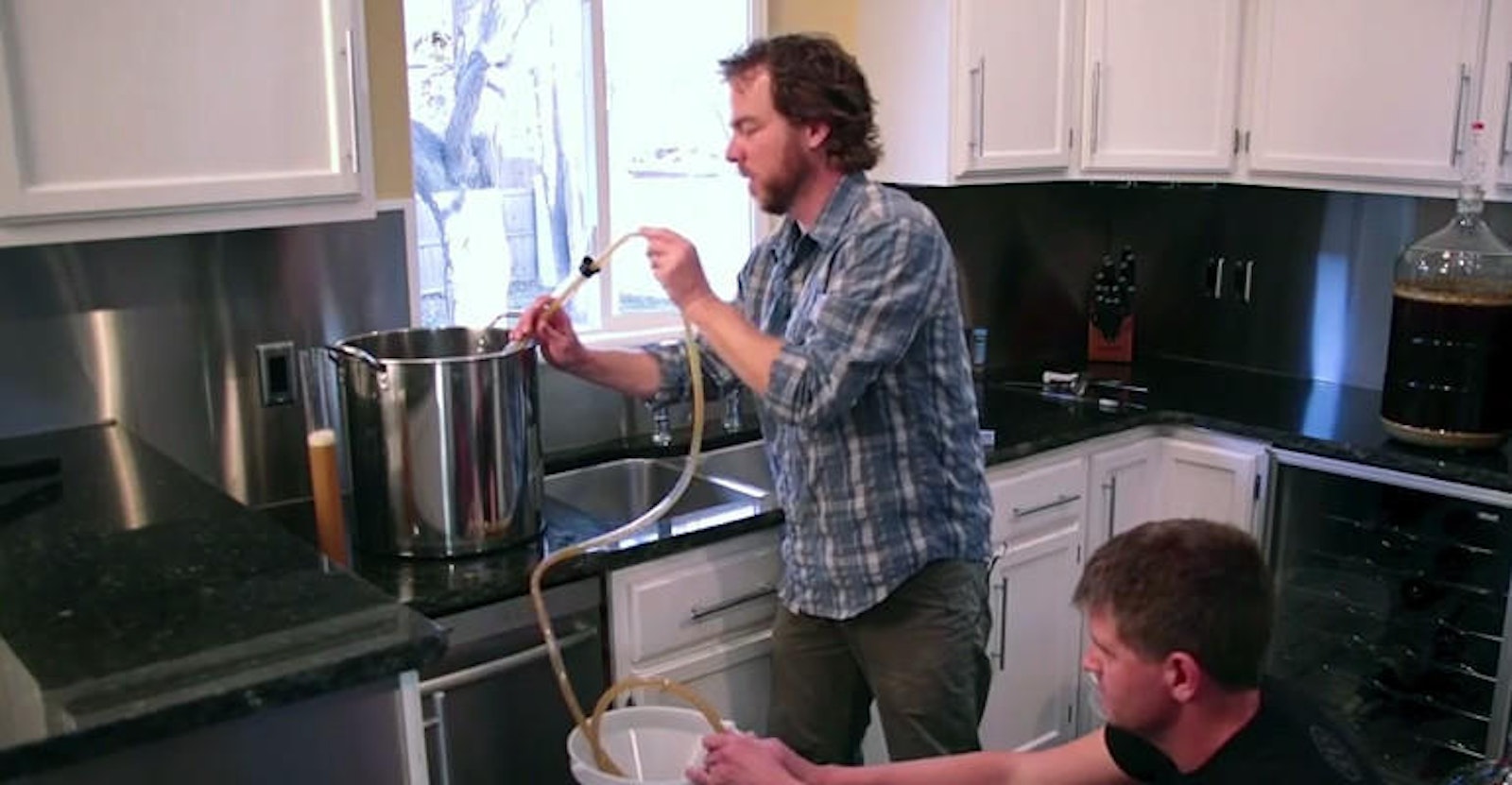Each and every beer we make has to be racked at least once during its lifespan. While professional brewers typically rely on pumps to move beer between stainless steel vessels, homebrewers usually employ a siphon.
We all intuitively understand the principle of a siphon. You position a container of beer or wort above the carboy or bucket into which you’d like to transfer. One end of a length of flexible tubing goes in the upper container, and the other goes in the lower container. Once the liquid starts moving, the siphon maintains itself until all the liquid is transferred. But starting the siphon in the first place can be awkward.
You could suck on the free end of the tubing to get the liquid flowing, but this isn’t very sanitary. If you start a siphon this way, you risk contaminating the batch with all kinds of hungry microbes that live in your mouth.
You could also gently lower the tubing into the beer in the upper container so that the tube fills with liquid as you submerge it. Then place your finger over the free end as you would a straw, put the free end in the lower container, and take your finger off. This is effective in a pinch, but it can be messy, and you run the risk of disturbing sediment on the bottom of the source vessel.
Enter the auto-siphon. This handy gadget lets you start a siphon easily and sanitarily. It consists of two pieces, both of which are made of rigid plastic and can be sanitized using standard methods:
- A racking cane to which standard plastic tubing can be attached
- A wider sleeve into which the racking cane fits
The inner racking cane is free to slide within the plastic sleeve. When the assembly is placed in wort or beer, liquid will fill the small space between the two concentric parts. Pulling up on the cane and then plunging it down forces liquid to flow up through the cane and into your plastic tubing. One or two pumps is usually all it takes to start the siphon.
The auto-siphon works well for most transfers, but it’s common for hop matter to clog the siphon when you're working with dry hops. While it’s possible to use the auto-siphon like a pump, doing so isn’t ideal because of the risk of oxidation. A better method is to sanitize a fine mesh bag and place it around the tip of the auto-siphon to keep particulates from getting into the siphon in the first place.
When you're looking for an auto-siphon, spring for the model with the ½” diameter racking cane instead of the smaller version, which is only 5/16”. The wider cane moves liquid 2.5 times as fast as the smaller one, which means less time siphoning and more time brewing.
The auto-siphon makes the chore of starting a siphon sanitary, tidy, and painless.

